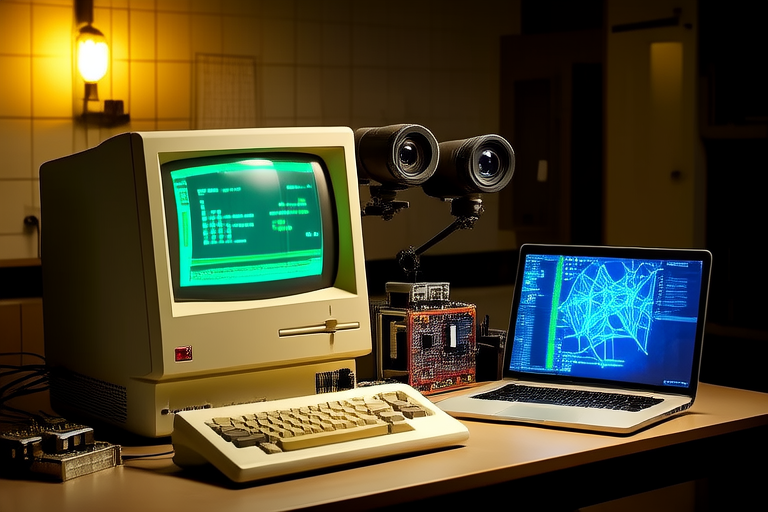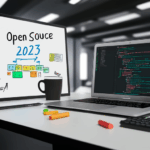“`html
The Evolution of Computer Vision: From Concept to Reality
Introduction
Computer vision, a subset of artificial intelligence, involves enabling machines to interpret and understand visual information from the world around them. This technology has become indispensable in modern applications ranging from facial recognition systems to autonomous vehicles. Once a theoretical concept, computer vision has evolved into a practical tool that powers numerous technological advancements.
The importance of computer vision lies in its ability to process vast amounts of visual data, making it possible for machines to make decisions based on what they “see.” From enhancing medical diagnostics to improving traffic safety, computer vision has transformed industries and everyday life. This article explores the journey of computer vision from its conceptual beginnings to its current practical applications and future prospects.
Early Beginnings
The roots of computer vision can be traced back to the mid-20th century when researchers began exploring ways to enable machines to perceive and interpret visual information. One of the earliest pioneers was Frank Rosenblatt, who developed the Perceptron, a neural network model designed to recognize patterns in images. In 1966, Marvin Minsky and Seymour Papert conducted the famous “MIT Summer Vision Project,” which aimed to teach a computer to recognize objects in a simple black-and-white image.
During this period, significant efforts were made to develop algorithms capable of processing visual data. Researchers focused on edge detection, pattern recognition, and feature extraction. These early projects laid the groundwork for future advancements in the field, demonstrating the potential of computer vision despite the limitations of available technology.
Breakthroughs in the 20th Century
The latter half of the 20th century saw several breakthroughs in computer vision, driven by improvements in both hardware and software. One of the key developments was the introduction of the Hough Transform in 1962 by Paul Hough, which allowed computers to detect lines and shapes in images. Another milestone was the development of the Lucas-Kanade algorithm in 1981, which enabled optical flow analysis, a technique used to track moving objects.
Despite these advancements, early computer vision systems faced significant limitations due to the lack of computational power and limited data availability. Early applications, such as character recognition and simple object detection, were often constrained by the inability of machines to accurately process complex visual scenes.
Advancements in the 21st Century
The dawn of the 21st century marked a turning point for computer vision, thanks to the rise of machine learning and deep learning. These techniques have revolutionized the field by enabling machines to learn from large datasets and improve their performance over time. Convolutional Neural Networks (CNNs), introduced in the late 1980s but gaining prominence in the 2010s, have been particularly transformative. CNNs are designed to automatically and adaptively learn spatial hierarchies of features, making them highly effective for tasks such as image classification and object detection.
The increase in computational power, coupled with the availability of large-scale datasets, has further accelerated progress in computer vision. Technologies like GPUs and cloud computing have made it possible to train sophisticated models more efficiently, leading to breakthroughs in areas such as facial recognition, autonomous driving, and medical imaging.
Current Applications
Today, computer vision is widely applied across various industries, offering solutions to complex problems and enhancing efficiency. In healthcare, computer vision is used for medical imaging analysis, helping radiologists detect diseases such as cancer at an early stage. For instance, AI-powered systems can analyze X-rays and MRIs to identify abnormalities with greater accuracy than human eyes alone.
In the automotive industry, computer vision plays a crucial role in autonomous driving. Vehicles equipped with advanced cameras and sensors use computer vision to navigate roads, detect obstacles, and make real-time decisions. Similarly, in retail, computer vision enables cashier-less checkout systems and inventory management through automated shelf scanning. Security systems also benefit from computer vision, with facial recognition and surveillance cameras enhancing public safety.
Future Prospects
The future of computer vision holds immense potential, with ongoing research and development poised to push the boundaries of what machines can see and understand. Emerging trends include the integration of computer vision with other AI technologies, such as natural language processing and robotics, to create more intelligent and versatile systems. Quantum computing and neuromorphic chips may also contribute to significant advancements in processing speed and efficiency.
However, the widespread adoption of computer vision raises important ethical considerations. Issues such as privacy, bias, and accountability must be addressed to ensure that these technologies are used responsibly. As computer vision continues to evolve, it is essential to develop robust frameworks and regulations to mitigate potential risks and maximize benefits.
Conclusion
The evolution of computer vision from a theoretical concept to a practical reality has been nothing short of remarkable. From its humble beginnings in the mid-20th century to its current applications in healthcare, automotive, retail, and security, computer vision has transformed industries and enhanced our daily lives. The future of computer vision promises even greater advancements, with the potential to solve complex challenges and drive innovation across various sectors.
As we look ahead, it is crucial to embrace the opportunities presented by computer vision while addressing the ethical and societal implications. By doing so, we can ensure that this powerful technology continues to serve humanity in meaningful and responsible ways.
“`


